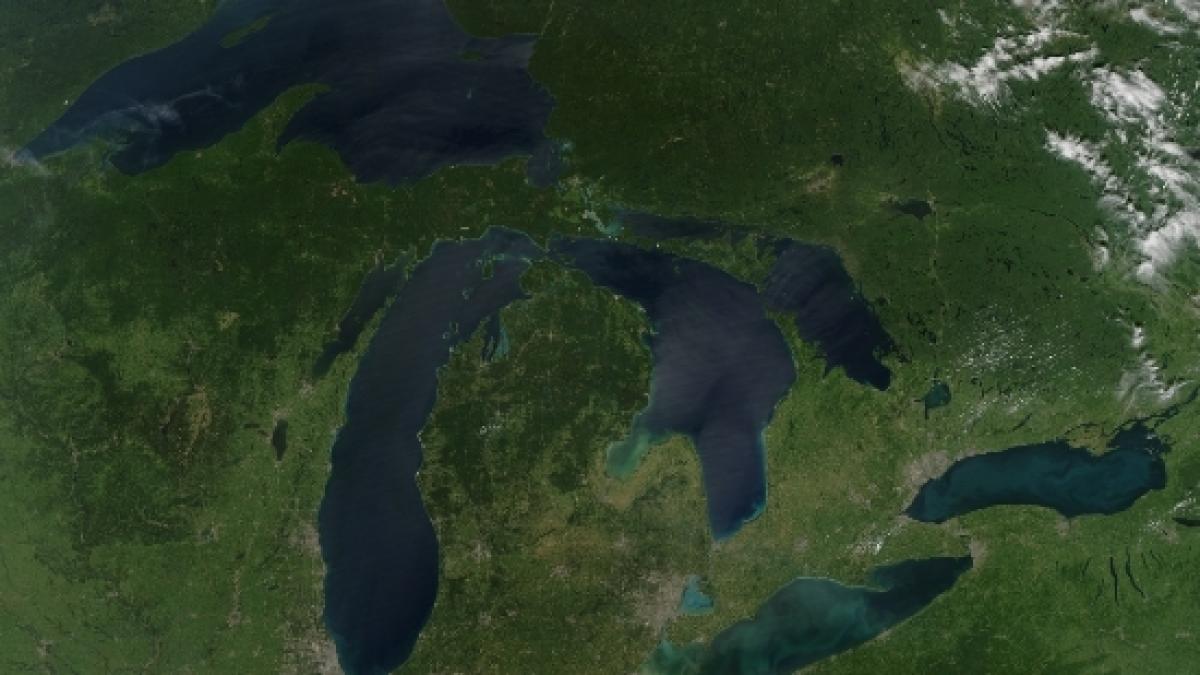Herald-Palladium: Preserving the Health of the Great Lakes

As Michiganders, we all understand the importance the Great Lakes play in our livelihood and way of life. Many of us at some point in our lives have experienced the joy of casting a line into the sparkling waters of one of our beautiful Great Lakes, from the Third Coast of Lake Michigan to the Walleye Capital of Lake Erie. But the Great Lakes are more than just a pastime for those of us who are lucky to call Michigan home; they serve as our region’s most precious and indispensable resource, acting as a vital economic and environmental asset for Michigan and our nation at large.
Taken together, the Great Lakes commercial, recreational, and tribal fisheries generate over $7 billion annually and support over 75,000 jobs in the region.
However, this vital part of our region’s economy is threatened by many challenges, including the migration of Asian carp. These invasive species were originally brought to North America to help control pests in aquaculture facilities, but over time, they have escaped into the wild and have been steadily moving northward through the Mississippi River basin toward Lake Michigan. According to the Great Lakes Fishery Commission, two varieties of Asian carp, bighead and silver carp, have been located just 47 miles from Lake Michigan.
If invasive carp were to enter the Great Lakes, they could severely damage the ecosystems within these waters. Asian carp, which can weigh over 100 pounds, pose a threat to native fish populations, such as walleye, yellow perch, and lake whitefish, by outcompeting them for resources.
Due to the significant threats that invasive species pose to fishing, recreation, and tourism, the U.S. Army Corps of Engineers initiated a study to identify long-term solutions for combating Asian carp. In 2019, I supported legislation that required the Army Corps of Engineers to expedite the completion of this study. The final plan identified various technologies and structural measures that could be implemented through a joint project between the federal government and the states of Michigan and Illinois to prevent the migration of invasive species.
The Brandon Road Interbasin Project would prevent Asian carp from entering the Great Lakes through the deployment of layered technologies, including an electric barrier, an acoustic deterrent, and a continuous bubble curtain. In 2019, I visited the Brandon Road Lock and Dam to observe where these recommended measures could be implemented to safeguard the health and well-being of the Great Lakes.
In February 2025, Illinois Governor J.B. Pritzker halted the Brandon Road Interbasin Project, jeopardizing efforts to keep invasive Asian carp out of the Great Lakes. In response, I collaborated with Congressmen Jack Bergman (MI-01), John Moolenaar (MI-02), and John James (MI-10) to send a letter to Governor Pritzker urging him to reconsider this politically charged decision. Preserving our Great Lakes should not be a political bargaining chip.
Recently, President Trump signed a memorandum to support efforts aimed at preserving the Great Lakes ecosystem, which includes the construction of the Brandon Road project. This directive will help advance the project, ensuring the longevity of the various recreational, fishing, and tourism opportunities the Great Lakes provide. During a recent hearing held by the House Committee on Natural Resources, which I am proud to serve on, Secretary Doug Burgum committed to prioritizing the prevention and removal of invasive carp and other aquatic species in the Great Lakes.
This all comes as great news for the people of Michigan, but we must continue to work towards protecting the long-term health of our fisheries. As a member of the Great Lakes Task Force and the Natural Resources Committee, I am dedicated to advancing efforts to address the threats facing the Great Lakes.
This month, in an overwhelmingly bipartisan vote, the House passed the Great Lakes Mass Marking Program Act, which I introduced alongside Representatives Debbie Dingell (D-MI) and Bill Huizenga (R-MI). This legislation aims to establish a program that promotes the mass marking of fish in our hatcheries by placing a small coded-wire identifier tag in the snout and clipping the adipose fin of hatchery-raised fish. By implementing this program, we will be able to better track population patterns and changes, leading to improved conservation practices. Our goal is to enhance our understanding of how to preserve the fisheries of the Great Lakes for future generations.
The Great Lakes are a national treasure, and we must continue to be good stewards of their waters and wildlife to ensure future generations can experience the same joy of their shores as we do today.
This op-ed appeared in the Herald Palladium here: https://www.heraldpalladium.com/opinion/preserving-the-health-of-the-great-lakes/article_b919a229-f6dd-5f6e-b9e3-4825c8d76c80.html.